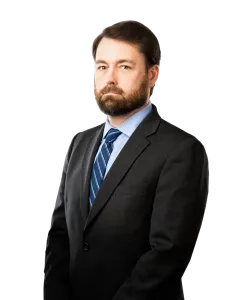Is There Civil Authority Coverage for COVID-19 Claims?
As noted in our previous Legal Alerts concerning insurance coverage for coronavirus related issues, as businesses are forced to close, travel is restricted, and supply chains are disrupted, COVID-19 insurance claims will proliferate, likely affecting all lines of coverage, particularly property and general liability coverages. In this note, we focus on civil authority business interruption claims.
Commercial property policies may include coverage for losses caused by the forced closure of property by a civil authority. The coverage generally applies when an insured is unable to access its property due to a government order as a result of physical damage to an adjacent or nearby property, not owned or controlled by the insured, but rather the adjacent property of another. Thus, civil authority coverage typically requires physical damage to property to trigger the coverage (similar to most other coverages offered in an all-risk policy). If the policy requires physical damage to an adjacent or nearby property, and the insured is unable to establish a causal connection between the government order and that physical damage, then there likely will be no coverage. This may become relevant as governmental response to the virus intensifies, i.e., if closures of businesses, modes of transportation, and ports of entry are necessitated by, for example, declared national, state, and/or local edicts of emergency.
The insuring agreement of the civil authority coverage extension is generally worded as follows:
This policy is extended to insure against the actual loss sustained by the Insured, during the length of time, not exceeding two (2) consecutive weeks, when, as a direct result of damage of the type insured against, access to Described Premises is specifically prohibited by order of civil authority.
Damages resulting from a civil authority prohibiting or impairing access to a building or property requires a showing that (i) the damage was caused by the action of a civil authority; (ii) the action of the civil authority prohibited or impaired access to the insured’s premises; (iii) the civil authority’s prohibition of access to the premises was caused by direct physical loss of or damage to property other than, and adjacent to, the insured’s premises; and (iv) the loss or damage was caused by or resulted from a covered cause of loss/peril under the policy.
Although not directly on point, suits that were filed under this coverage after the September 11, 2001 terrorist attacks in the United States – many by airports and hotels that sued for coverage for business interruption losses caused by the cessation of air travel for a period of time after the terrorist attacks – are instructive. These cases universally held that there could be no recovery in these situations because the alleged damage was not a direct result of the events, and was too tangential to be covered. See e.g., Southern Hospitality v. Zurich American Ins. Co., 2003 WL 23416117, 2003 U.S. Dist. LEXIS 18324 (W.D. Okla. Sept. 30, 2003); 7730 Bienville Partners, Ltd. v. Assur. Co. N. Amer., 2002 WL 31996014, 2002 U.S. Dist. LEXIS 18780 (E.D. La. Sept. 30, 2002); see also United Air Lines, Inc. v. Ins. Co. of State of Pennsylvania, 439 F.3d 128 (2d Cir. 2006) (holding that United Airlines was not entitled to civil authority coverage because the airport was shut down before the attack on the Pentagon, and was therefore not “as a direct result of damage” to adjacent property, as required by the policy). The evidence in each of these cases showed that the shutdown in each instance was based on the fear of future attacks, not actual damage to adjacent property.
As noted in one of our prior Legal Alerts earlier this week, however, Motorists Mut. Ins. Co. v. Hardinger, 131 F. App’x 823 (3d Cir. 2005), and Port Auth. of New York & New Jersey v. Affiliated FM Ins. Co., 311 F.3d 226 (3d Cir. 2002) (upon which Hardinger relied), may provide guidance on the issue of physical loss or damage arising from the coronavirus—to wit, whether it has caused the subject property to become uninhabitable and, therefore, fell within the “direct loss or physical damage” provisions of the all-risk policy. Hardinger held that e-coli at the homeowner insured’s property, which caused viral infections, caused the property to become uninhabitable and, accordingly, a direct physical loss or damage within the meaning of the policy. Hardinger relied on Port Auth. of New York & New Jersey as articulating the standard for determining whether “physical loss or damage” to an insured structure has occurred, as follows:
[O]nly if an actual release of asbestos fibers from asbestos containing materials has resulted in contamination of the property such that its function is nearly eliminated or destroyed or the structure is made useless or uninhabitable, or if there exists an imminent threat of the release of a quantity of asbestos fibers that would cause such loss of utility. [Emphasis by Hardinger Court]
Accordingly, Hardinger and Port Authority may support the argument that the coronavirus can result in property adjacent to the insured becoming uninhabitable, within the meaning of the “direct physical loss or damage” provisions of an all-risk policy, sufficient to trigger coverage for a business interruption loss based on civil authority. Note that a civil authority must completely prohibit access to the insured’s premises in order for the business interruption coverage under this provision to be triggered. It is not enough that access to the premises is merely hindered. We recognize that different courts may come to different conclusions on this novel and complex coverage issue.
A complete understanding of a civil authority business interruption insurance claim is critical, and will vary, in large part, based on the language in the subject policy, which can materially vary from policy to policy.
Contacts
- Related Practices



